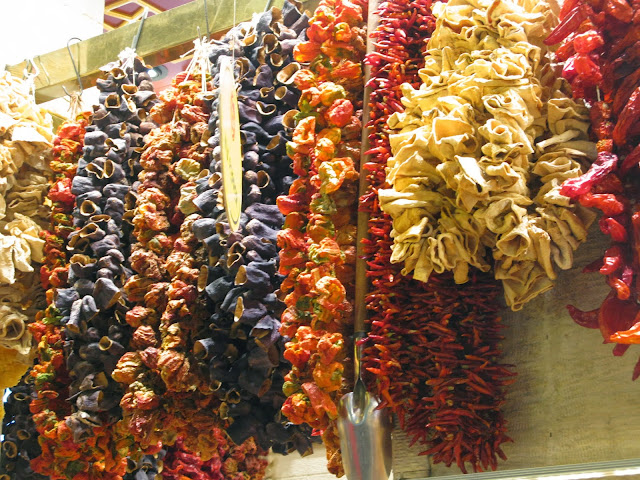I have to admit that things get a little fuzzy about this
time in the tour. Yesim cleverly
re-arranged several stops to take advantage of traffic and crowd issues, so our
itinerary does not quite match up. And I
was using two cameras, and I failed to change the date and time in one, so it
thought it was in California, perhaps another day entirely. And, of course, the number sequences in the
cameras overlap from time-to-time, so it takes a keen eye to make sure that all
the photos are of the same thing!
BUT we did have a delightful visit to the Rustem Pasha
Mosque and the Spice Bazaar on the same day, and here they are!
Rustem Pasha Mosque was built by the Grand Vizier in
1561. A Croatian slave, he rose through
the ranks and married the sultan’s daughter, an example of what could be
accomplished by non-Ottomans. And often
had to, since it was beneath the Ottomans themselves to do any actual
work. The mosque was designed by the
imperial architect Sinan, and constructed after his death. This is the same Sinan who began his career as
an architect at age 50 after a successful military career, and designed the
huge mosque for Suleiman the Magnificent.
This mosque is notable for its magnificent tiles, of which many are of unique
designs and colors. It is a small
mosque, tucked out of the way in a busy neighborhood market area. We could have walked right by it and never
known it was there.
The colors from the tiles and decorations are almost
intoxicating. There are so many designs
that it is almost impossible to take in the intricacies of the interior
design.
A framed original tile on the exterior wall.
The interior also displayed unusual writing, calligraphy being the highest art form in the Muslim world.
Yes, that's writing!
The Spice Bazaar is nearby, and we took a brief walk
through. When we had visited 15 years
ago it was deeply exotic and foreign,
with huge mounds of unknown spices, herbs and foods piled in the various shops. No one beckoned us then, or tried to make a
sale to us.
This time the Bazaar was much more accessible, with most
shops displaying wares labeled in English.
Shopkeepers would call out to us,
and try to sell us saffron or tea or Turkish Delight. It was still an interesting visit, but not
the adventure to the exotic East it was
15 years ago.
Next to the Spice Bazaar is the Egyptian Market, where food as well as spices are sold. There were many more local people there, arguing over the freshest meat and fish.
And olives!







































No comments:
Post a Comment